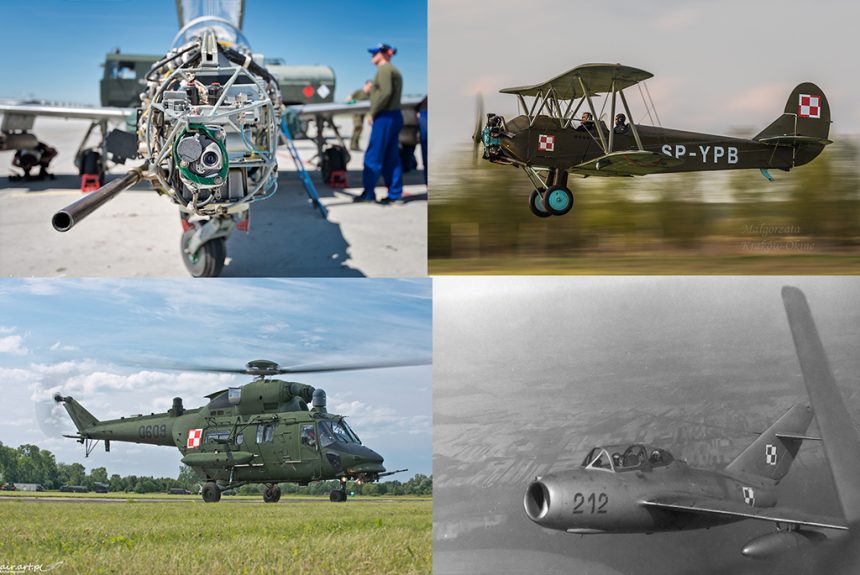Polish Aviation Industry explained.
The Early Days
Aviation became present in the territory which was to become Poland once it reached Europe. Those two things happened simultaneously. The Poles who were living, in practical terms, in three separate countries (Germany, Austro-Hungary, Russia) were devoting a lot of time to research and practical issues related to aviation. Stefan Drzewiecki, an engineer living in Russia was the most notable of the scientists at the time. His theoretical studies conducted between 1887 and 1892, concerning the principles of flight applicable to aircraft and sailplanes, as well as the propeller theory research, were used by the Wright brothers, when they were designing their “Flyer”. Drzewiecki’s propellers were utilized by Louis Bleriot and numerous pioneers.
The Poles also faced numerous obstacles in the area of engineering, since the hosts strongly opposed any symptoms of scientific development in the area where their jurisdiction was placed. The Austro-Hungarian Empire was the most friendly, or least unfriendly, of the hosts. In that region, in Lviv, at the only Polish University of Technology, the first ever organization tasked with supporting the development of the Polish aviation was established. It was known as “Awiata”. The organization was not only tasked with promoting the new domain of technological development, through organization of displays. One of the goals adopted was to conduct research and experiments related to theory and practical side of aviation.
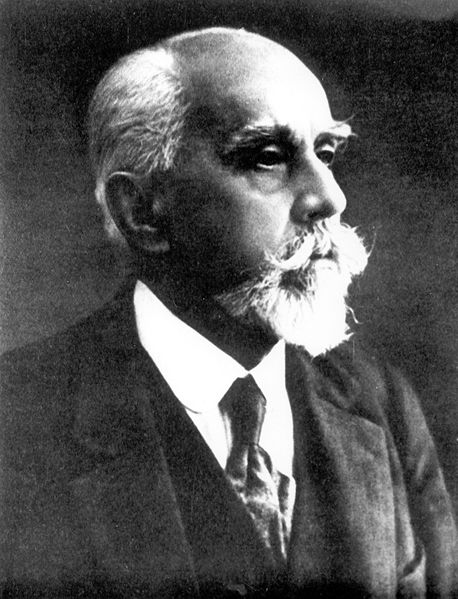
The first attempts to create aviation industry on the formerly Polish land date back to 1910. Warsaw Aviation Society “AWIATA” was established in the Russian part of Poland. The main objective adopted by this entity was to create a pilots’ school and aviation workshop. The workshop established was the place where the Farman IV plane was being license manufactured. During that period the first Polish indigenous aircraft designs began to emerge too. It is hard to verify which design was the first one, since Poland per se was non-existent. It was in 1912 when the Russian Empire liquidated the W.T.L. AWIATA facility, with the property transferred to the Russian Army. When Warsaw was taken over by the Germans in 1916, the occupant established a factory manufacturing the Albatros B II airplanes there, with 200 examples built. Furthermore, the Germans also established a military facility tasked with overhauling the aircraft engines there. Both enterprises would ultimately be liquidated at the beginning of 1918.
When Poland regained its independence in November 1918, no factory manufacturing airplanes was located within its territory.
The overhaul workshop taken over from the occupiers could be, then, considered to be the cradle of the Polish aviation industry. The said facility also played a crucial role in creation of the Polish Air Force. The facility overhauled the airplanes and engines left by the occupiers and manufacturing all the required parts and propellers. In many cases, this referred to complex aircraft overhauls and restorations. Centralne Zakłady Lotnicze facility (Central Aviation Works) was founded in 1918.
The authorities, being aware of the requirement to unify the number of operated types of aircraft and to introduce more modern designs into use, undertook efforts to create aviation-profiled facilities and transfer the relevant technologies to master this field. As the Central Aviation Works in Warsaw had no capacity to work on new initiatives, private Zakłady Mechaniczne Plage & Laśkiewicz facility (Plage & Laśkiewicz Mechanical Works) had a task assigned to manufacture the Ansaldo Balilla and A-300 aircraft. These designs turned out to be a failure, which, amplified by the lack of experience in the manufacturing process, led to a situation in which the production was stopped in 1925. Once the facility became a state entity it was transformed into Podlaska Wytwórnia Samolotów (Podlachia Airplanes Manufacturing Plant), where “Lublin” reconnaissance aircraft were manufactured. From that moment on, the industry faced a dynamic development. SKODA opened its aircraft engines manufacturing plant at the time, while the newly established factories in Poznan and Biała Podlaska began to manufacture Hanriot and Potez airframes. PWS was another plant established at the time, working on manufacturing the Potez XV. The facility was taken over by the state in 1932. Being subordinated to PZL (Polish Aviation Works – Polskie Zakłady Lotnicze), it manufactured sailplanes and trainers – PWS-26 was the best known product of this plant.
At the beginning of 1930s it was assumed that the young engineers and designers had accumulated enough knowledge to try to create own designs, compliant with the needs. Institute of Aerodynamics and Institute of Flight Tests (Instytut Aerodynamiki and Instytut Badań w Locie) were established at the time, to accommodate the future aircraft development programs.
A proper atmosphere was created, stimulating the manufacturing of the Polish aircraft. This was a result of the program led by the Head of the Department of Aeronautics of the Ministry of Military Affairs, Col. Ludomił Rayski. Rayski was all about self-reliance and becoming independent from any foreign aircraft design.
Amateur designers also thrived, creating sporting and touring airplanes. A group of students of the Warsaw University of Technology, gathered within the workshop established in 1925 of the “Aviation Section of the Mechanics Student Reading Group”, became a seed which later on was transformed into a private RWD manufacturing plant. RWD became one of the most important Polish aircraft manufacturers, with numerous successful touring and sporting designs created. RWD-8 trainer and RWD-13 touring airplane that were series manufactured, as well as the RWD-6 and RWD-9 that won the Challenge 1932 and 1934 aircraft competitions were among the best known designs of the RWD plant.
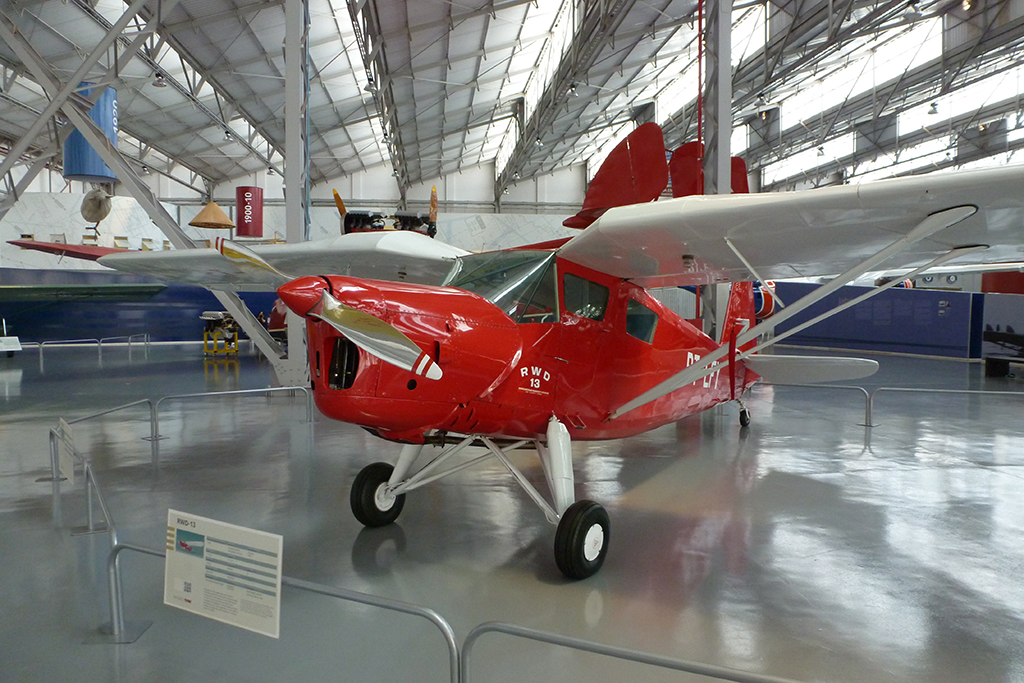
Another step that made aviation and industry in Poland much more modern was taken when the Poles decided to acquire a license which would allow them to master the all-metal aircraft technologies. A decision was made to go with the Wibault’s offer – the Wibault 70C1 design complemented with a transfer of technology. Moreover, it was decided that a newly established PZL facility in Warsaw would manufacture the aircraft. It was founded as a result of reorganization of the Central Aviation Workshop facility. The said decision contributed to expansion of the modern aviation industry in Poland and the industry started to deliver world-class products at the time.
The aircraft in question made it possible to develop a Polish fighter in which the new technology was used. This was done by Engineer Zygmunt Puławski who had been supervising the Wibault 70 license takeover process. PZL P.1 was the designation for the new fighter. It was the first Polish fighter aircraft made fully out of metal which became a foundation for a whole family of aircraft in the future. Furthermore, some of the design solutions implemented in case of Wibault 70C1 (wing skin for instance) were also used in case of aircraft developed later.
In the mid-1930s heightened tensions characterized the international arena, as the Nazis came into power in Germany. Threat was acknowledged, defense spending – increased. In 1936 an ambitious program was launched, the goal of which was to double the quantity of the manufactured airplanes. Private aviation plants were nationalized, and the industry went through a centralization process. PZL was the facility that emerged through transformation of CWL.
This plant was the most significant of the Polish aerospace industry entities before WWII. At the time, PZL Okęcie also created numerous modern designs. Due to the space constraints of this publication, we cannot list all of the aircraft of the time, however one should note the PZL P.7 and PZL P.11 fighter aircraft. Poland became the first nation to own a fighter force involving planes made completely out of metal, once these were acquired. PZL-23 Karaś, PZL-26 sporting airplanes or prototypes of the pre-War new generation military designs that were not ultimately produced and delivered all were promising at the time.

Some attention should also be paid to the PZL-37 Łoś (Moose) bomber, with innovative design solutions which later on became a standard all around the world. Here we are speaking of Eng. Kubacki’s landing gear design, Swiatecki bomb slip or Eng. Misztal’s torsion box. Introduction of this complicated design uplifted the quality to an unprecedented level, with new tools and accessories required. The airplane’s performance, in terms of its speed, outclassed the fighter aircraft operated at the time, with 96 examples made.
Right before the war, Biała Podlaska PWS and AVIA facility in Central Industrial District (Polish: Centralny Okręg Przemysłowy, abbreviated COP) construction sites were prepared. COP was a special economic zone located in the region of Poland struck with poverty and gathering new investments, including modern aircraft engine manufacturing plants in Rzeszów and Okęcie, or airplane manufacturing plant in Mielec. Unfortunately, the entities were unable to initiate full scale production before the war broke out.
In general, the Polish aviation industry manufactured 4,054 aircraft in the interwar period, including 100 prototypes and 1245 license manufactured aircraft.
The Aftermath
As a result of WWII the Polish aviation industry underwent complete degradation. The facilities were completely destroyed, while the manufacturing assets were no longer present in the country. Personnel loss in case of the highly qualified staff was the most painful effect the war had on the industry. The professionals either fell victim to the war, or were scattered around the world. Numerous designers, industry professionals, test pilots decide to leave their homeland, in the light of the political transformation.
A designers group led by Engineer Tadeusz Sołtyk initiated its activities as the first industrial entity dealing with aviation. Sołtyk later became the creator of the first Polish jet – the TS-11 Iskra. LWD (Lotnicze Warsztaty Doświadczalne – Aviation Experimental Workshop) led by Sołtyk design the first of the Polish post-war aircraft – Szpak-1. The effort was made in very tough circumstances. The pioneer, post-war period saw the Polish engineers adopt simple steel-tubes, wood and canvas airframe structures. The designs made use of components left in Poland by the occupant, or were based on the Soviet Po-2. The Żak, Miś, Żuraw or Junak are some of the aircraft that were created at the time. Junak, manufactured by PZL-Okęcie in a number of 251 examples and powered by the Po-2 engine would become a primary training aircraft for general aviation and the Air Force for many years to come.
Once Junak started to be manufactured, in light of the rapid development of aviation Sołtyk noted that the design was to become obsolete soon. He decided to design a modern, all-metal trainer powered by a Polish engine. The TS-8 Bies that made its first flight on Jul. 23, 1953, was reliable and well designed. It also set several records. 250 examples were manufactured, and the aircraft was used to train military pilots.

As the Cold War came into being, the aerospace industry of Poland became fully dependent on the Soviet Union, and all of the work done was being conducted to meet the Soviet Union’s demands. And this was the case for all of the countries of the Eastern bloc. The Polish industry was facing serious development and modernization. The aviation facilities became a part of the supply chain of the Warsaw Pact. As potential emerged to easily launch aviation-related projects (proper HR, facilities and heritage were available), the Soviet Union granted Poland with a license to manufacture modern jets and rotary-wing aircraft.
Within the period between 1951 and 1960, at WSK PZL Mielec facility which had manufactured the Łoś bombers before the war, a lot of MiG-15 and MiG-17 jets were made. These aircraft became a foundation for the Polish Air Force for a few decades. Lims of the Polish Air Force made their last flight on July 1993. In total, between 1951 and 1960, over 704 examples of LiM were made. Unfortunately the Soviet Union, due to political reasons, did not grant Poland with a license to manufacture the MiG-21. Mielec facility was forced to manufacture the technologically obsolete Antonov An-2 aircraft – this was a step back for the Polish industry.

The obsolete An-2 (maiden flight in 1947) agricultural and cargo aircraft of simple design manufactured mostly to meet the demand in Soviet Union had two faces. On one hand, this hampered the development of the Mielec factory, on the other, it provided the plant with a long-term stability for many decades to come. In total, between 1960 and 2002, 12,500 examples of the An-2 were made, in a variety of variants. Most of them (more than 10.5 thousand) were exported to the USSR.
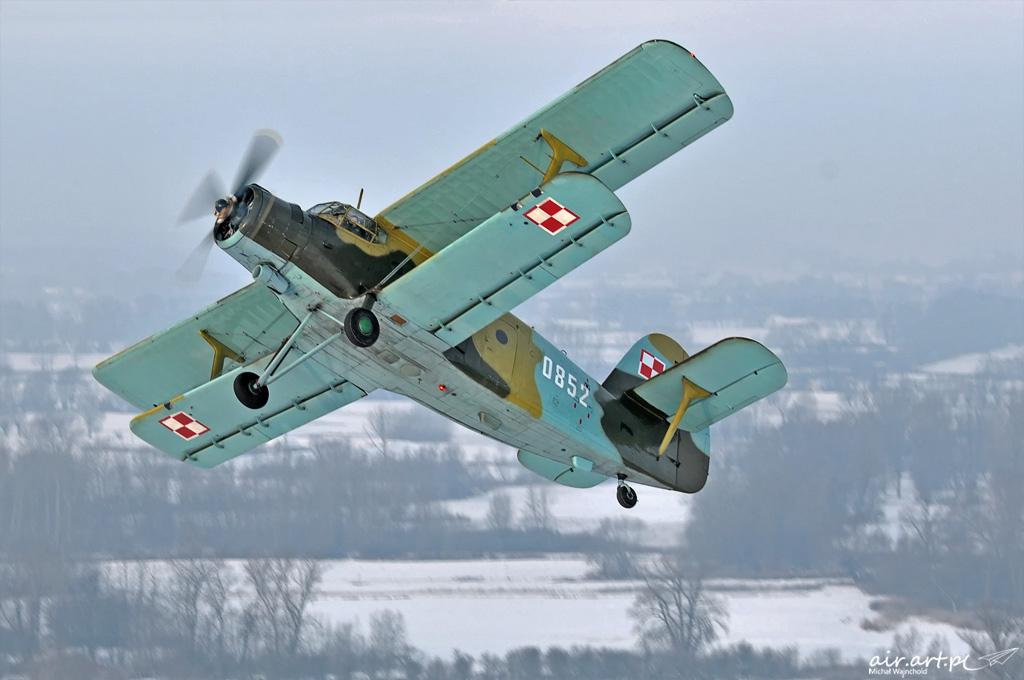
Attempts were also made to modify the fighters becoming obsolete to conduct CAS operations. It shall also be noted that the plans, even though they were ambitious, enjoyed no support or enthusiasm on the part of the licensor. This made it more difficult or even impossible to implement all of the required modifications.
ISKRA – The Legend
The first all-Polish jet aircraft was also manufactured at Mielec, in late 1950s, in parallel with An-2 and LiMs. The TS-11 Iskra is an icon for the Polish Post-War design thought. The jet has quickly grown into a legend. The design proved that Poland could become one of the leaders of the aviation industry and that it was able to design and manufacture a high-performance jet independently. The trainer jet aircraft that also had some combat capabilities was designed by Tadeusz Sołtyk working at the Warsaw Institute of Aviation. Iskra made its maiden flight on Feb. 5. 1960. More than 420 jets were made between 1962 and 1987, in 20 production lots. 50 Iskras were exported to India, where they were operated between 1976 and 2004. Iskra broke several international speed records, similarly as Bies, a couple of years before.

It should also be added that TS-11 Iskras, that are gradually approaching the end of their lifetimes, are used by the “Biało-Czerwone Iskry” (White-Red Sparks) aerobatic team. Wearing an attractive livery, the jets made their first public appearance at the Poznan Air Show in 1991. The aerobatic team in question continues the traditions established by the “Grupa Rombik” [Little Rhombus Group] that performed at the air shows in Poland in the early 1970s. “Biało-Czerwone Iskry” aerobatic team has performed many of its displays in Poland and abroad. Iskra was also showcased all around Europe, here we are referring to 1976 and 1977 Farnborough shows and the 1977 Paris Air Salon.

After developing Iskra, the team of designers set a goal for themselves, which was even more ambitious. They decided to create a modern supersonic aircraft. This is how the TS-16 Grot was born. Unfortunately the program was cancelled for political reasons. Meanwhile, PZL Okęcie stepped away from aviation for a few years.
Elite Club of Helicopter Manufacturers
The history of the Polish helicopters goes back to 1947. One needs to associate the first Polish rotary-wing aircraft with the RWD designer, Bronisław Żurakowski. It was at the Central Institute of Aviation where a helicopter design group was established. This group designed a prototype that took aa name of GIL (Bullfinch), derived from its SP-GIL registration. It made its maiden flight on Apr. 4. 1950. It shall be noted that the aircraft was created without any scientific or manufacturing background. GIL was a subject to damage and redesign, to be presented ultimately to the military and civil authorities and rolled out in 1951 in the end.
In the period between 1952 and 1953 more derivatives of the design were proposed, however these did not take real shape in a form of prototypes. A helicopter design bureau was then established in 1954 at the PZL Okcie facility. The entity led by Żurakowski created a design documentation for a BŻ-4 “Żuk” four-seater helicopter. The aircraft featured a three-blade main rotor based on a universal joint and a three-blade tail rotor stabilizing the helicopter and diminishing the force imposed onto the control column. The main gearbox and the shaft were installed in a flexible manner. However, the ground test period took three long years, from 1956 to 1959, due to the troublesome nature of the drive, and due to the fact that the design was not really reliable. Furthermore, the helicopter did not evoke much interest, since Mil Mi-1 design (SM-1) started to be manufactured at the WSK-Świdnik facility, on the basis of a license provided by the USSR.
In February 1959 “Żuk” made its maiden flight, and then the project was abandoned. As in late 1959 a decision was made to license manufacturing of the Soviet rotorcraft, the Okęcie design bureau was disbanded. The Soviet era in the Polish helicopter industry came into being. Mi-1 helicopter started to be manufactured at the Świdnik plant in 1956, under SM-1 designation. This meant that Poland joined an elite club of a couple of countries that serially manufactured rotary-winged aircraft. And the Świdnik facility did not lag behind, as almost 1600 examples were made between 1956 and 1965.

Analyzing the design, the Polish experts came to a conclusion that it would be fairly simple to enlarge the cabin. Between 1961 and 1964, along with the prototypes, 89 SM-2 helicopters were manufactured. It turned out though that the helicopter performance was significantly worsened after the weight went up. Production was quickly stopped, also due to the fact that soon afterwards production was launched with regards to a much more modern turbine-driven Mi-2 Hoplite, on the basis of a license.
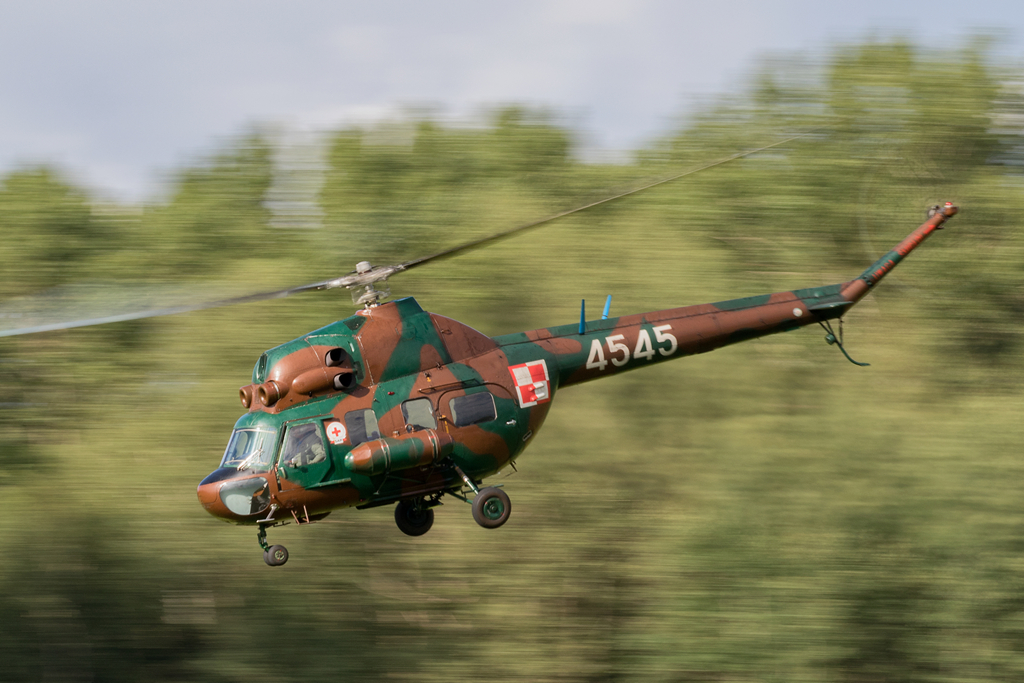
The Mi-2 was manufactured in Poland exclusively, starting from 1965 until 1986, without any major changes. In 1986 the PZL W-3 Sokół was designed as its replacement. Numerous interesting variants of the Mi-2 were designed, including armed, rescue or radio-repeater derivatives. Production process was also evolving. The engine was modernized, while rotor blades were redesigned and made out of laminates. It was also decided in the 1970s to offer the Mi-2 globally, with Allison engines and western avionics. Unfortunately, in the early-1980s Poland was isolated due to the Cold War becoming more intensive, and the export hopes quickly disappeared. The PZL Kania, this was the name adopted for the export variant, was resuscitated in the 1990s, but with no major success.
The W-3 Sokół was a design that invoked hopes equivalent to the Mi-2. It was to fill in the gap after the Mi-4 helicopter (larger than Mi-2) decommissioned in the USRR. The Poles designed the propulsion and fuselage with the use of the helicopter variant of the Soviet TVD-10 engines. Those engines were being manufactured in Poland for the An-28. The helicopter made its maiden flight in 1978, production began in the 1980s. And for the reasons identical as the ones emerging in case of the An-28, no export success was achieved.

Only the Polish military acquired the helicopter and it is operating several specialized variants, as well as utility helos. The special-purpose versions include maritime SAR, SIGINT or MEDEVAC varieties.
PZL SW-4 is the latest Polish single-engine helicopter that has been designed to replace the Mi-2 and complement W-3 airframes. The design effort began in the 1980s, however, due to the crisis and due to the emphasis placed on Sokół, the prototype’s maiden flight was delayed. Only after the USSR markets were closed and the Mi-2 turned out to be obsolete, the Świdnik factory was forced to create a design compliant with Western standards. SW-4 made its maiden flight in 1996. Production was launched and the design was offered to the Air Force as a training platform. After the PZL Świdnik facility was taken over by Agusta Westland, the facility started to manufacture fuselages and components for the British-Italian company. SW-4 became a base for an optionally piloted helicopter, and interest in this design can be witnessed in case of the Royal Navy.

Gliders – Where the Champions were Made
This does not apply to the Bielsko-Biała based gliders manufacturing plant. Within the framework of training the future pilots, competition gliding was on the rise. Initially Poland used the ex-German equipment, left around the airfields by the occupant. As time passed by, the Jeżów Sudecki ex-German glider manufacturing facility was used to produce more sailplanes. Own designs were also being created at the time. Polish glider pilots quickly became known all around the world, for their skill and expertise. The competition gliding also constituted a stimulant for creation of gliders that were more and more perfect, thanks to implementation of state of the art technologies in their designs. Successes achieved by the Polish sportsmen became a natural marketing tool for the airframes they were flying. Trainer and competition gliders were sold in many countries, all around the world. The export included socialist as well as capitalist states. Mucha, Jaskółka, Foka or Kobra gliders became well known, advertising the Polish know-how, while the Polish glider pilots were winning world and Europe championships, using the above sailplanes.
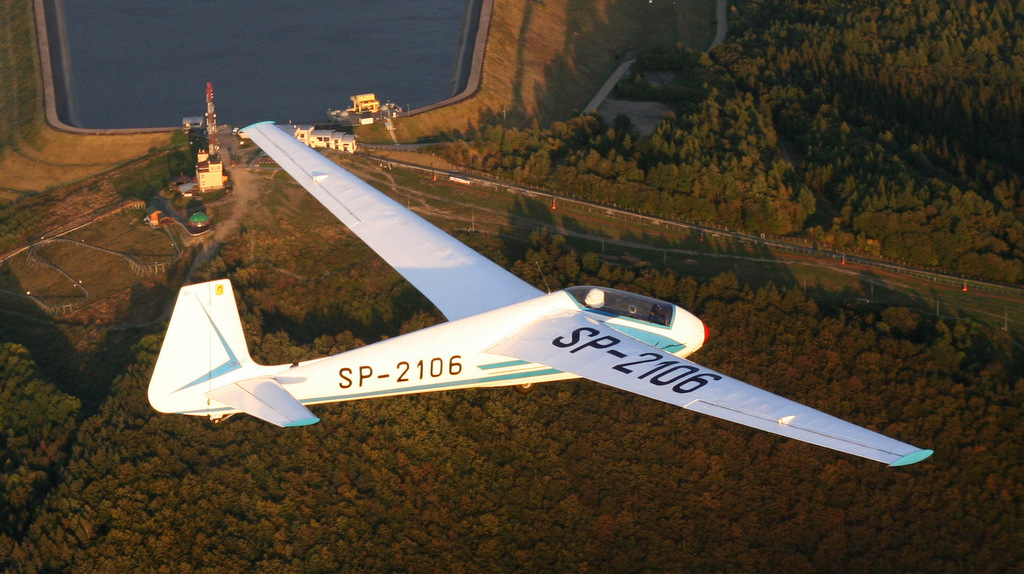
Wilga
As the competition gliding was becoming more and more popular, one needed a plane to tow the sailplanes. Furthermore, the Polish aviation was lacking a modern, yet light multipurpose platform that could be used for training with parachutes, medical transport or in agriculture. Moreover, in case of a design as such one could make a good use of STOL properties, good performance and low-cost of use. All of the aforesaid requirements led to creation of the PZL-104 Wilga aircraft which was born at the WSK Okęcie facility. The airframe was designed by a team led by Eng. Ryszard Orłowski. It was made out of metal. The aircraft received a flat WN-6RB engine, designed by. Witold Narkiewicz. The prototype made its maiden flight on Apr. 24 1962.

The engine was troublesome. It overheatedand the fuselage had to be redesigned. Even though the Poles were close to resignation, Export interest of Indonesia kept them going. Bronisław Żurakowski was the engineer who decided to create the Wilga 2 prototype that received a new lighter fuselage. The PZL-104 Wilga 2 was created at the beginning of 1962, and in 1963 it made its maiden flight. Export Wilga C variant used a flat Continental engine. Ultimately the problems with the flat engines made the designers adopt the more powerful Al14 engine which worked well at low RPM, which , on the other hand, contributed to good STOL properties of the aircraft. Wilga 3 was born in this way. After certain modifications were made, the designers created the PZL-104 Wilga 35 airframe that made its maiden flight in June 1967 and then was series manufactured.
Not only was the aircraft a workhorse at flying clubs, being used for towing gliders and leisure flying, it was also a successful sporting airframe. This was proven by the fact that once the Poles dominated the aeroplane sport in Wilgas, rules and specifications applicable to the aircraft were changed to end the reign of this PZL design.
Spreading the Wings
The industry made another qualitative leap after the so called “decade of success” arrived. At the beginning of the 1970s, the blunt Communist authorities willing to liquidate the Polish aviation industry were replaced by Edward Gierek. This former emigrant who spent most of his life in France and Belgium was very well aware of the gap between Poland and the West. Thanks to his policy of openness and external financing, the Polish aviation industry, still greatly influenced by the Soviet Union, stood a chance of working together with the European nations. This led to procurement of a number of technology and product licenses, which translated into modernization of the aviation sector. Socata Rallie (PZL Okęcie PZL 105 Koliber) or Piper Seneca (PZL M20 Mewa) licenses made it possible to get a grip of new technologies and develop entirely new products. Piper Seneca was used as a foundation for the design of PZL M26 Iskierka by the Mielec designers in the late 1980s. Its purpose was to act as a cheap training platform.
Unfortunately, as the trends in pilots training were headed towards diminishing the cost, the priorities adopted by the factory were changed and the political system was transformed, the manufacturing was limited. The potential customer: the military and flying clubs; did not show much of interest in the design. The Air Force decided to go with a larger and heavier PZL 130 Orlik platform. Iskierka was too expensive for the Flying Clubs to procure, as they were operating in line with the free market principles.

1970s and 1980s also marked a new beginning of relations between USSR and Poland. The Poles were perfectly aware that even though the demand for the An-2 biplane was high, this airframe was heavy and it was powered with a non-economical engine similar to the engines that were used in the B-17 bomber. Thus, the Colt could not have been attractive outside the Eastern Bloc. A number of initiatives was undertaken to create a product that would be modern and competitive. As a result of the above, a whole set of agricultural planes was designed.
In the 1970s a decision was made to acquire the An-28 twin-engined aircraft license. An-28 was expected to act as a regional airliner in the USSR, replacing the An-2. This design was complicated, in comparison with An-2. Its introduction happened in sync with political transformation and the economic crisis of the 1980s in Poland, which translated into a relatively long period of time required to implement and certify the aircraft that made its maiden flight in Mielec, in 1983. In the light of the economic transformation and introduction of currency settlement, the original order (1000 examples) was canceled only after 180 aircraft were made.
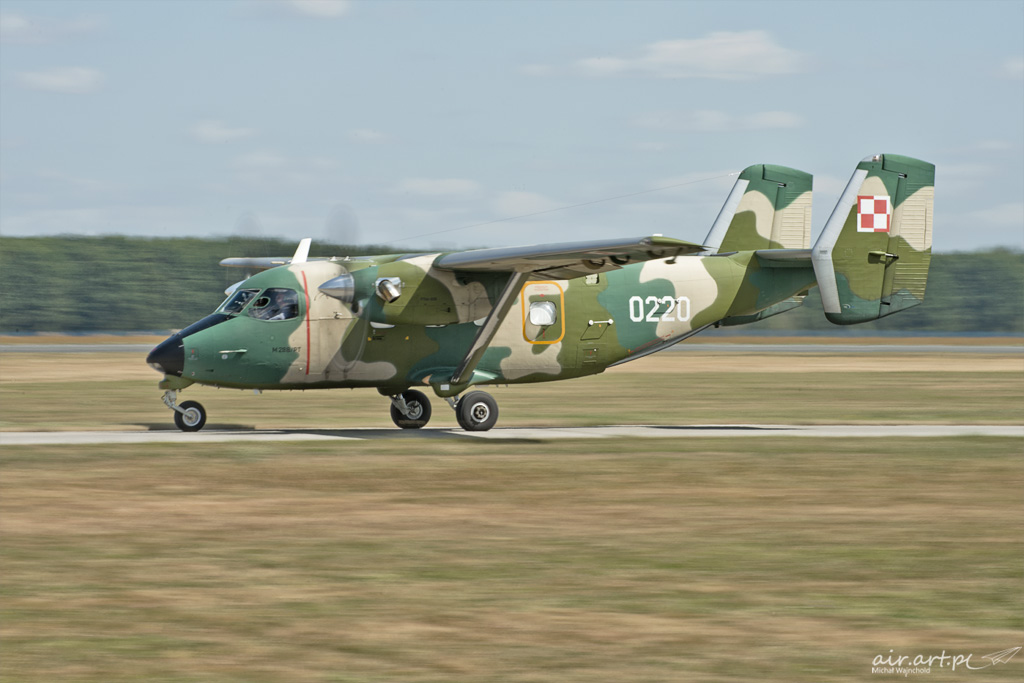
Agriculture – A Polish Specialty
When one looked at the Eastern bloc, Poland was the country that got itself specialized in agricultural airplanes, helicopters and hardware that was useful for farmers, when it came to fertilizing and fighting pests. The first steps in the field of agro-aviation were taken by the Poles before WWII, in 1925. CWL was the facility that created the first spraying systems and fitted them onto Potez XV, Breguet XIV and Fairman Goliath F-68 airframes. However, all of the effort was interrupted by WWII.
Following the end of the war, the idea to protect agriculture from air was revived. The Li-2 aircraft were properly equipped by the Central Aircraft Study (Centralne Studium Samolotów) design facility based at the Okęcie airfield in Warsaw. Later, Po-2 airframes, properly modified though, were also operated in agro-role.
It was only after the above period when Poland began to manufacture agriculture-dedicated aircraft. As Yak-12 production began, PZL Okęcie decided to design agricultural hardware. Following the long period during which relevant experience was being gathered and operational knowledge acquired, in 1957 customization of the PZL-101 Gawron took place, in order to create a specialized, agricultural variant. With a payload of 500 kg, the airframe in question became the primary agricultural aircraft in Poland and it was also widely exported. In the capitalist countries the design in question created a brand for Poland and the Poles entered the international market of agricultural aviation. Following this positive beginning, PZL Okęcie decided to open a specialized agricultural aviation branch.
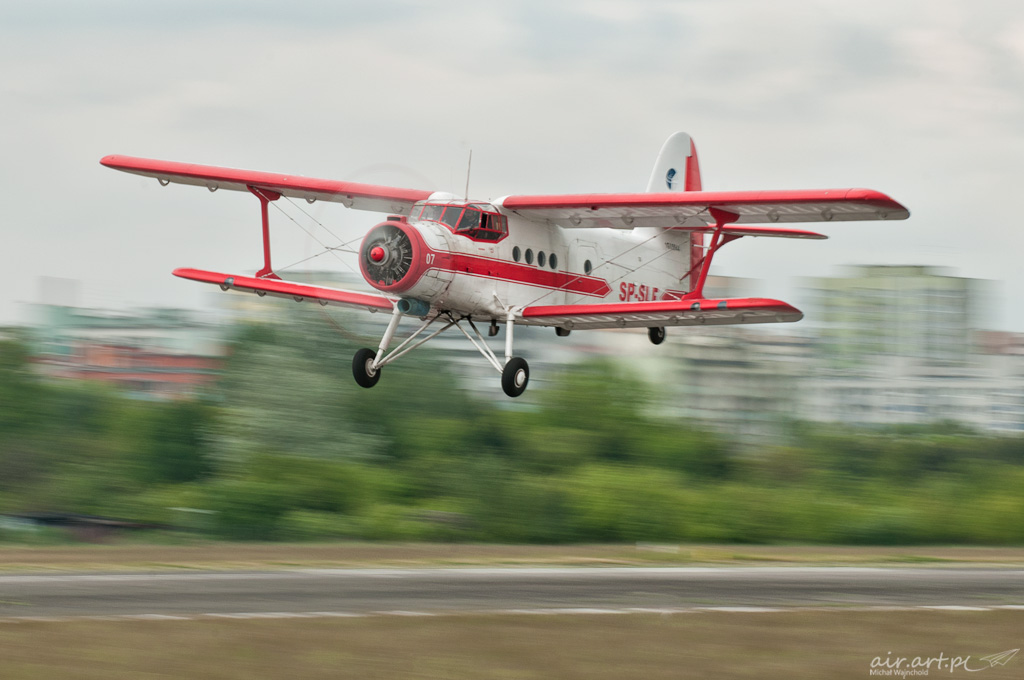
Initially, the division was making use of PZL-101 and An-2. After the Polish designs proved their value they could have been witnessed, in 1960s and 1970s, not only above the Polish agricultural areas, but also over Bulgaria, Austria, Vietnam, Libya, Tunisia, India, Egypt or Sudan. As the market was not really saturated, it was decided in the 1970s to work on a specialized agricultural airframe. Successor was needed to replace Gawron, that would be safer to use and more cost-effective, with any disadvantages of the former addressed. It was decided to go with a design created by Andrzej Frydrychowicz, also known as PZL-106 Kruk. The aircraft in question made its maiden flight in 1973. It was the first specialized agricultural aircraft that was also safe for the pilot, as the chemicals were stored in front of the cabin. Piston engine was later replaced with a turbine. For smaller areas, a conversion kit was available for the Wilga aircraft described above, nonetheless it was not really popular.

PZL Mielec, on the other hand, once the facility began to manufacture the An-2, got itself immersed in the agricultural aviation, as An-2 was a true workhorse for the Soviet kolkhozes. The Colt (NATO designation) matched the Soviet-Russian requirements. Chemicals did not take the whole space of the cabin, which made it easier to use the aircraft at long distances. This has been proven to be of advantage in agro-aviation in Africa. A whole fleet of An-2 was deployed from Poland to Egypt, Sudan or Ethiopia at the beginning of the season. Not only did the crews carry people to work, but they also had spares and all equipment required to conduct operations away from their home base with them.
The Soviet Union also asked Poland to design a large agricultural aircraft powered by a jet engine – this resulted in development of the PZL M-15 Belphegor which is the only agricultural jet and the only jet-powered biplane, the purpose of which was to replace the An-2. It was a successful design, even though economy of use was disregarded here. The aircraft was tailored to large areas and long-haul ferry trips. Almost 200 examples were made between 1976 and 1982.
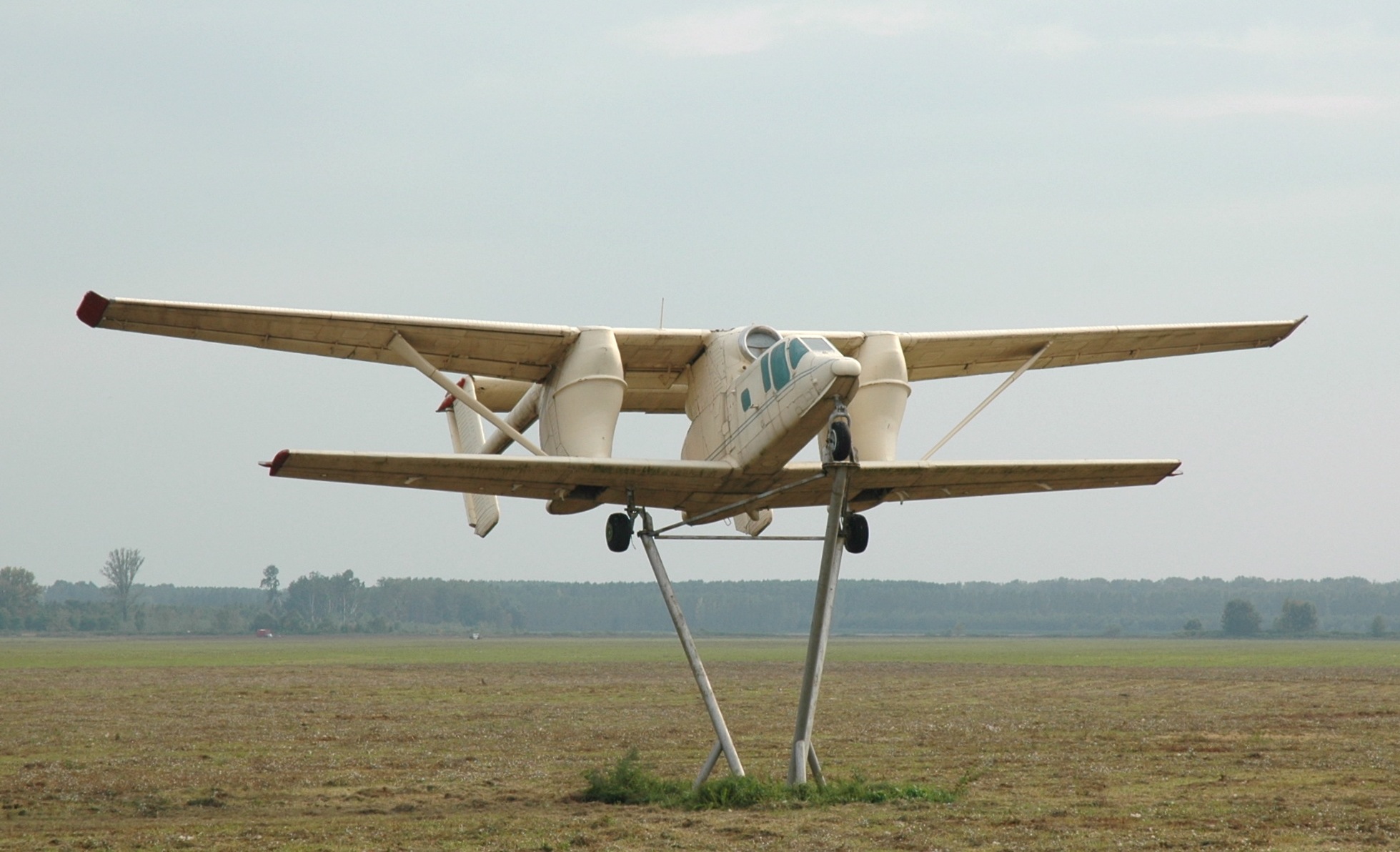
Mielec facility got itself open towards the West, it was also working on developing a replacement for the An-2. M-15 was a successful design, but it was tailored solely to the Soviet requirements. An opportunity presented itself when Rockwell offered that Ash62 engines powering An-2 shall be adopted to be installed in Trusch Commander. The Polish designers came to a conclusion that the aircraft may have some modernization potential and thus they created a prototype making use of only some elements of its prerequisite. This is how the M-18 Dromader was born, and this design enjoyed a significant export success. 760 examples were made and they flew all around the world. With continuous modernization the aircraft became a trademark for the Polish industry. A whole family of its derivatives was born. Unfortunately, the crisis of the 1980s hampered the development of the design, and the whole production was stopped. It was also used as a firefighting aircraft, and the new function made it even more attractive.
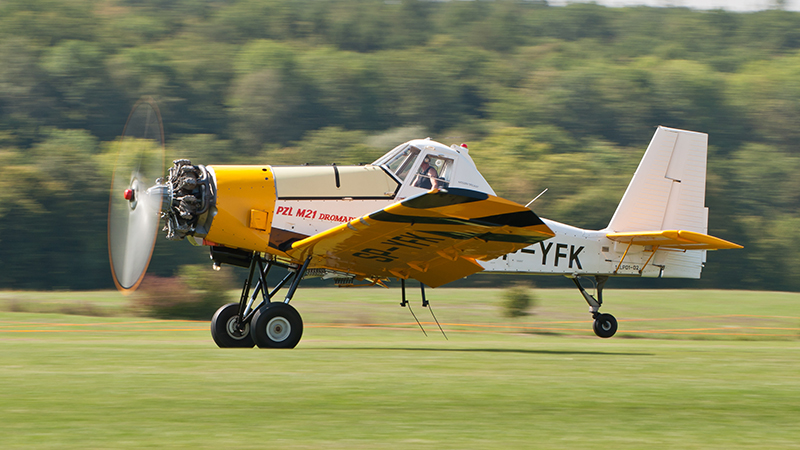
The helicopter manufacturers were also making attempts to work on agricultural aviation. Mi-2 manufactured in Świdnik became a base for the agricultural equipment. Even though it was expensive in use, it was well suited to work on smaller fields. PZL Świdnik also decided to render its agricultural aviation services abroad. Heliseco company was being present in Europe, Asia and Africa, nonetheless, at the beginning of the 1990s the agricultural aviation became a bit obsolete in its form at the time. As the aviation industry in Poland also fell into a decline, the companies withdrew from this business almost entirety. To a limited scope they are using their assets, for instance, to fight forest fires in Spain (W-3 Sokół helicopter). And the W-3 platform is also used by foreign companies in a similar role.
Capitalism – The End of the National Aviation Industry
With the communism falling in the early 1990s, an economic transformation of Poland began. On one hand, COCOM-imposed technology access restrictions were abolished, and export markets were opened globally. On the other hand though, this led to rapid increase of prices, which often translated into lack of competitiveness and loss of demand stemming from rational management of the existing resources and hard financial situation in case of the usual customers.
The former-communist market, including the Soviet Union, used a virtual currency – a transfer rouble. Once the USSR fell into decline, the market lost its meaningfulness. Attempts made to exclude currency from the settlement process were unsuccessful, and all contracts were consequently cancelled. The factories, being unable to commercialize their products that were not really competitive faced a tough situation financially, which led to restructuring of the whole sector. Production was scaled down, numerous programs were cancelled Many of them suffered from the lack of financing or interest on the part of the government, or even redefinition of the requirements. Here the I-22 Iryda trainer serves as a good example. It was designed in the mid-1980s. As the requirements were being continuously changed and lack of decision emerged in case of the end user, the project faced a tough future. After one of the crashes the whole initiative was abolished, while several aircraft in existence were decommissioned. 20 years later the Poles decided to acquire the Italian M-346 AJT platform.

R&D processes, as no funds and prospects remained in existence, were not making it beyond conceptualization and were being delayed, to become out of date. This happened in the case of the Polish CAS design, Skorpion, which did not make it beyond the stage of a wooden mock up. More and more companies fell into bankruptcy, which entailed a higher degree of dysfunction, making it virtually impossible to design and manufacture a complete airframe, including propulsion, avionics and onboard equipment. Ultimately all of the Polish aviation facilities have been sold to foreign entities. PZL Mielec is now owned by Lockheed Martin, PZL Świdnik is now owned by Agusta-Westland, while PZL Okęcie has been acquired by CASA (now – Airbus).

Recent days
National aviation industry is non-existent in Poland now, in a conventional sense, as a branch of the state economy that would be capable to independently design and series manufacture aircraft designs. Liquidation and handing over the control over all of the entities in the times of crisis seem to be a mistake, on the part of the authorities. The existing “Polish” facilities that used to manufacture hundreds of airframes in the past, now either manufacture single units or deliver elements for the mother-companies owning them, that are not interested in any meaningful development. WZL (Wojskowe Zakłady Lotnicze – Military Aviation Works) is the last of the state-owned entities, dealing with overhauls of the military aircraft. The Airbus company winning the helicopter tender was to bring a new hope for the state aviation industry thanks to a good offset agreement. Unfortunately, following the parliamentary election of 2016 the new government, adopting a pro-American stance, canceled the tender which until today remains unresolved.
It shall be noted that liquidation of major companies created a market niche for smaller, dynamic enterprises founded by former employees of the major players, while the foreign companies start to note the intellectual capital possessed by the educated employees. This is well exemplified in the Bielsko-Biała area where the sailplanes were manufactured in the past. Now the region is known for emergence of numerous companies working on laminate-based structures. “Aviation Valley in the Subcarpathia is another “aviation-focused” region, gathering numerous aviation-profiled companies together.
Written with Michał Wajnchold

